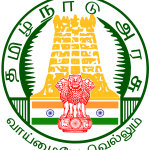Some Major Initiatives for Enhancing Productivity of Agriculture and Efficiency of Agricultural Markets
| No | Name of Scheme | Description |
| 1. | Pradhan Mantri Annadata Aay SanraksHan Abhiyan (PM-AASHA) | PM-AASHA, launched in 2018, covers three sub-scheme i.e., Price Support Scheme (PSS), Price Deficiency Payment Scheme (PDPS) and pilot of Private Procurement & Stockist Scheme (PDPS). Under PSS, physical procurement of pulses, oilseeds and Copra is done by Central Nodal Agencies with proactive role of State governments. PDPS covers all oilseeds for which MSP is notified. Under this, direct payment of the difference between the MSP and the selling/modal price is made to pre-registered farmers selling his produce in the notified market yard through a transparent auction process. |
| 2. | Pradhan Mantri Krishi Sinchayee Yojana (PMKSY) – Per Drop More Crop | PMKSY was implemented in the year 2015-16. It focuses on enhancing water use efficiency through expansion of cultivable area under assured irrigation, improve on-farm water use efficiency to reduce wastage of water, enhance the adoption of precision-irrigation and other water saving technologies, enhance recharge of aquifers and introduce sustainable water conservation practices. |
| 3. | Pradhan Mantri Fasal Bima Yojana (PMFBY) | PMFBY was introduced in 2015-16 to provide better insurance coverage for agricultural crops and thereby mitigate risk. A total of 69.9 lakh farmers have benefited from PMFBY. The scheme aims to provide comprehensive insurance coverage to farmers. |
| 4. | Soil Health Card | Soil Health Card Scheme was introduced in the year 2014-15 to assist State Governments to issue soil health cards to all farmers in the country. Soil health card provides farmers information on the nutrient status of their soil along with recommendation on appropriate dosage of nutrients to be used for their soil conditions. |
| 5. | e-National Agricultural Market (e-NAM) | e-NAM is an online trading platform for agricultural commodities for transparent price discovery. So far, 585 wholesale regulated markets in 16 States and 2 UTs have connected to e-NAM. |
| 6. | National Food Security Mission (NFSM) | National Food Security Mission has been implemented since 2007-08. It was redesigned in 2014-15 to increase the production of rice, wheat, pulses and coarse cereals. |
| 7. | National Food Security Act (NFSA) | The National Food Security Act was enacted in July, 2013 and rolled out in 2014. The Act legally entitles 67 per cent of the population (75 per cent in rural areas and 50 per cent in urban areas) to receive highly subsidized food grains. Under the Act, food grain is allocated @ 5kg per person per month for priority households category and @ 35 kg per family per month for AAY families at highly subsidized prices of Rs.1/-,Rs. 2/- and Rs. 3/- per keg for nutri-cereals, wheat and rice respectively. Coverage under the Act is based on the population figures of Census, 2011. The Act is being implemented in all 36 States/UTs and covers about 81.35 crore persons. |




